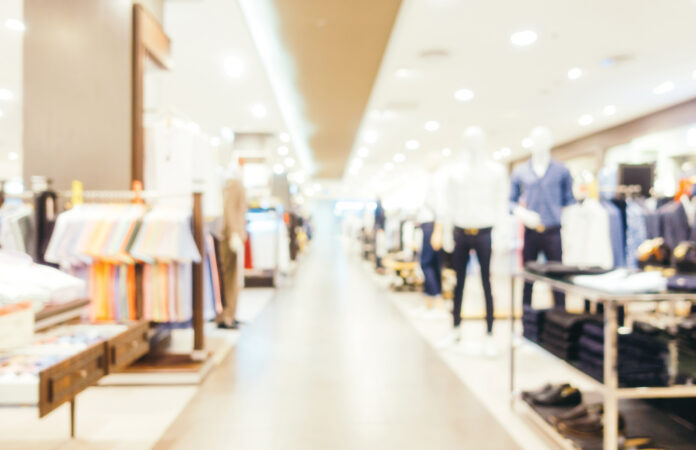What is the future of retail in Pakistan? That’s a nagging question in the minds of big retailers in business, and it should also be a nagging question for an average citizen of the country. The retail sector is considered to be the third largest contributor to Pakistan’s economy, contributing about 18-20% of the GDP. The retail sector likely touches you as a citizen everyday, possibly multiple times in a day. From the prominent fashion brands to footwear and groceries and food and fuel, retail transactions are what an average individual goes through every day.
How retail encapsulates an ordinary citizen is a code every big business mind is looking to crack. Pakistan currently provides decent opportunities for the retail business to make bank in the industry, which has an effect on the economy as well.
The indicators are positive in this regard as a market. Pakistan has one of the largest populations of youngsters that are considered to be spending-oriented rather than savings-oriented. There is an increasing trend towards digital shopping boosted by the presence of 180 million cellphones in the country out of which 100 million have access to 3G/4G service, as estimated by the Pakistan Telecommunication Authority (PTA). On the physical side, Pakistani society is considered to enjoy themselves by shopping in malls and retail outlets when they have extra time and money, due to the lack of other recreational options.
So in such a scenario, what would be the future of retail in Pakistan? Any prediction in this regard would be tough if the existing transformation that has happened in Pakistan is not discussed.
A transformation story of brands and malls
The first phase of the retail transformation in Pakistan is the story of growth of new brands, and old brands becoming bigger and transforming into organised chains. The retail transformation that has happened so far in Pakistan, mostly pertains to the growth in brands and coincides with the growth of the mall culture and people starting to get more familiar with the idea that there are many brands in different categories of retail all available under one roof.
This essentially is the concept where brands start off with a single outlet and grow on to become organised chains with multiple outlets. This phenomenon is more visible in the fashion retail category which is more prominent than other categories, the retail transformation in Pakistan is synonymous with how fashion retail has transformed.
Some of the most successful fashion retailers today like Sapphire are a recent phenomenon. The Sapphire Group launched Sapphire Retail in 2014 with their first store in Dolmen Mall in Karachi. Over the span of about eight years now, Sapphire now has over 30 outlets, growing from being a city level brand to a national brand. From eastern wear to western wear, leather goods to furniture, brands from different categories of retail have propped up and retail has been a matter of growth.
Some of Pakistan’s famous malls opened in the last 10 years. Safa Gold Mall opened its doors in 2014, Emporium Mall was opened in 2016, followed by Packages Mall in 2017 and Lucky One Mall also opening in 2017. Now the trend has moved to Tier-II and Tier-III cities like Gujranwala, Sialkot and Faisalabad, helping brands grow by increasing their sales and helping them become organised brands.
“In Pakistan, in the last two decades, brands have mushroomed. From hypermarkets to footwear to apparel, Pakistan has transformed from brands with a few stores to brands with organised chains,” says Asfandyar Farrukh, managing director at HUB, a leather goods retailer, and co-founder at the Chainstore Association of Pakistan (CAP).
According to estimates provided by the Chainstore Association of Pakistan (CAP), the official body that represents prominent retail brands and SMEs, retail and wholesale trade grew at 10% last year and has been averaging 10% growth. From the retail and wholesale trade, retail trade has been averaging 20% growth, with the formal retail sector from the overall retail, also averaging a growth rate of 20%. CAP, however, could not provide estimates regarding the number of brands entering the retail sector in various categories over the last few years.
“The growth of mall culture really fuelled the growth of organised brands. This phenomenon is not that old but that is how it really started and the retail industry started getting recognised nationwide,” says Farrukh Malik, chief operating officer at Sana Safinaz.
It is particularly in the last two decades that with this transformation towards a more brand oriented culture and proliferation of malls that the way retail is run has also changed. From a few members of the same family busy in running day to day affairs of a particular retailer, for instance in the fashion, pharmacy or kiryana, the retail business has evolved from two to three retail stores to organised chains with many outlets. With this growth towards becoming organised chains, retailers have gained prominence and became big businesses. Along the way, these retailers have developed a bureaucracy of their own with the running of affairs of their business handed over to professional managers, eventually helping them grow to the point where they are.
“This is one of the major transformations that has happened in the retail sector. Managing a chain of tens of stores requires a completely different structure, a completely different mindset, technology and specialisation, skills and education. With the growth in retail brands and emergence of organised chains, management guard has been handed over to professionals,” says Farrukh.
Fashion retailer Bareeze currently operates about 90 stores all over Pakistan, and three other countries which include Malaysia, the United Arab Emirates (UAE) and the United Kingdom (UK). Likewise, Imtiaz Super Market, a modern trade hypermarket now operates about 25 stores in major cities of Pakistan.
The second disruption
The second major change in the retail landscape was the Covid-19 pandemic that careened the world towards a new era of digital economy. Profit has earlier profiled and critiqued numerous technology startups that have been trying to reshape the way retail works. From grocery delivery disruptors to B2B eCommerce startups complementing the growth of kiryana stores and last mile delivery startups, helping brands fulfil orders peacefully is a post-pandemic phenomenon.
What is also post-pandemic is the realisation among some top-tier brands that digital capabilities were necessary for them to think about all along because the pandemic opened up a vast opportunity to expand eCommerce for various categories of retailers. Food, groceries and fashion eCommerce all picked up during the pandemic.
“Brands started realising that they need to have a firm foot in the digital market to be able to grow. Everyone has started evolving since then,” says Malik.
“Now there are so many brands that are present online only. Covid was in a way a blessing that you are not bound to one particular location. You can sell everywhere. You don’t have to work in an office. Now companies are working towards establishing proper online channels besides brick and mortar to strengthen digital presence,” says Malik.
In numbers, the growth of eCommerce has been impressive. For the first three quarters of fiscal year 2021-22, Rs76 billion worth of transactions were processed at registered eCommerce merchants, according to the State Bank of Pakistan data. In volume, 35.4 million eCommerce transactions were processed in the first three quarters of the year till March 31, 2022. The three quarters of 2022 posted a growth over the entire year 2021. According to the SBP’s numbers, for the year 2021, there were 21.9 million eCommerce transactions worth Rs60.6 billion. The trend is clearly towards the growth of eCommerce. These numbers are representative of overall eCommerce numbers and do not specifically represent the retail sector.
The future, therefore, entails the presence of a hybrid model where brands, even the new ones that launch would have to keep a brick-and-mortar presence. Shopping at brick-and-mortar retail outlets is unavoidable in the Pakistani society since families here consider it as a means to enjoy themselves. In fact a source at one of the top fashion brands in Pakistan had told Profit that the pandemic did provide an impetus to online shopping but the trend started decreasing, at least at their brand, after brick-and-mortar started opening because people like to go out for shopping in Paksitan as a matter of recreation. That is not to downplay the role of eCommerce. Online presence is necessary for brands to increase sales because of the reach of to persons that are not near any brand outlet. Therefore the future entails having a hybrid model.
That would require an increase of focus on incorporating technology in existing business operations as well.
What does the future entail?
One of the biggest impediments that industry has faced so far is the lack of access to reliable data for forecasting. Zain Aziz, creative director at Bareeze, says that the entire industry perhaps operated on excel sheets with manual labour analysing the sales trends and forecasting sales for the next year. With the advent of the pandemic and things moving digital more aggressively has pushed brands to think creatively about data collection and analytics to make intelligent decisions about the future.
“We don’t have that sophistication of systems, the sophistication of stock and assortment planning. I think that is what our industry lacks,” says Aziz. “Stuff like stock planning and numbers like forecasting and demand, that sort of stuff. I think as compared to the rest of the world, what is really lacking in Pakistan is the intelligence behind it.”
“Intelligence in managing cash is the real skill and for any business, no matter what you are doing, that is the one single thread that unites businesses is to be able to manage cash,” he says.

“To be able to manage cash, what you really need is intelligence and how to plan stock, how you mark down, how you price. Right now a lot of us brands do it based on gut feeling. What is really required is the numerical technicalities. The rest of the world is doing AI based forecasting and pricing but we have not even reached step one,” adds Aziz.
Wahaj Tariq, the CEO of prominent fashion retail brand Limelight, also echoed a similar sentiment, hinting towards a state of confusion in the industry that is yet to complete evolution in organised brick-and-mortar retail that has now to move towards online as well and think about various technologies. The organised chains that can talk seriously about the use of technology to optimise their operations form only about 10-20% of the overall retail in Pakistan. The shifts in technologies they are being encountered with are being implemented in a country like the United States that has had decades of evolution in the retail sector that predates the existence of Pakistan. In the US, organised retail forms about 85% of the online figures.
“The developed world moved towards a saturation point in brick-and-mortar and then moved towards online. That involves use of and integrating technology and there is a dearth of people who can do it efficiently,” says Wahaj.
In some sense, this perhaps points towards the lethargy of the retailers that they don’t proactively take initiatives that can help their brands grow, but would have numerous complaints about how the government does not support them or takes them for a ride on taxation and other matters, and how the state of the economy is gloomy that has created uncertainty in the business. It is perhaps a collective of both factors. The state of the economy and problems with the government compound the issue but the retail brands also do not do anything creative that can help alleviate problems at their end. Sophisticated data collection techniques, for instance, can help analyse trends that can help in making better decisions, leading to better sales and profits that can make up for the increase in costs because of, say, multi-layered taxation by the government. In short, Pakistan’s retail landscape has been lazy in bringing new technologies on their own and keeping up with the trends, which they now see as how retail in Pakistan would be transforming in the future.
Aziz of Bareeze says that Pakistan’s retail sector hasn’t been able to take innovative initiatives because most of the retailers are first generation in Pakistan. “The shift from first generation to the second generation will necessitate the use of a lot of technology and understanding of how it works. When lots of retailers are making this transition from first generation to second generation, you’d have a lot of people who most likely wouldn’t have years of experience that would now be responsible for a big entity. In such cases, you look for systems to do it for you.”
However, belonging to the second generation of one of the biggest fashion retailers in Pakistan, Bareeze itself also uses the antiquated method of analysing data manually for future forecasting purposes. Zain says that at least their brand has not innovated because being an old brand, they still follow the old protectionist policies, but will be aggressively transforming to make Bareeze more intelligence-for-decision-making driven retail enterprise.
Bareeze is not the only one. Sana Safinaz will also have their focus on increasing the availability of data for better decision making.
“The growth of retail has also gotten people comfortable with sharing data to help brands increase their sales. Females were earlier afraid of sharing their phone numbers with brands but now they are comfortable because this helps them receive updates on promotional offers,” says Farrukh.
For big brands, collecting the right data across the board is going to be the challenge, presumes Farrukh. “Which data is relevant, and how to use it to increase sales and do relevant marketing, that would be the next big challenge in the next three years for all brands.”
Shamoon Sultan, the CEO of Khaadi, says that Pakistan’s retail sector is well on its way to induct new technology in daily operations in a bid to modernise the conventional back-end operations and processes in the manufacturing, warehousing and distribution value chains.

“Retail today is now about blending customer experience and giving customers the choice to engage in the channel of their preference. A responsive and fast online store, your social media channels and your physical stores are blending in seamlessly to give the customer the best of both worlds,” he says.
To sum it up, the major transformation that has happened in Paksitan’s retail scene is the growth of brands and organised retail and a greater inclination towards incorporating technology into retail operations. At a broader level, that is the transformation that should be expected in the future. Micro level transformations such as improvements in store designs and supply chain management are brand and segment specific.

However, impressive if it may seem, the number of Pakistan’s retail brands have reached a level of prominence and grown enough to be considered a benchmark is very small. The organised retail as a part of the overall retail is very small, constituting only about 10-20% of the total. While the glitzy and glamorous malls and trend setting fashion brands are impressive in their own right, they could have done a lot better.
So if the future is to be predicted, the prediction that comes first is that further transformation of retail is going to be similar to the earlier transformation that has happened: more brands would enter Pakistan’s retail scene and grow on to become organised chains. Would it be a likely eventuality that organised retail grows to 40% in the next 10 years? Would it be a likely eventuality that organised brands which are famous in Pakistan would move towards the next level of growth and become international brands? The answer to these questions is more uncertain than one would have thought.
Even the high flying retailers we spoke to said clearly that things were uncertain at the moment to say definitively what was going to happen even in the next five years. The general consensus, however, is that organised retail would grow with more brands making inroads, and existing organised brands would be optimising their operations using technology and creating efficiencies in their business processes for further growth.
For new brands to mushroom further and for the existing ones to become organised chains, what would be the constraints to their growth and eventually further transformation of retail? It might be those that the business sector itself can’t control i.e. taxes and government related deal.


























Excellent Insights on Retaik
“Retail”
My husband and I are another successful client of Cyber Genie Intercontinental among many. I read countless positive reviews about how they have been using their cyber expertise to help people achieve their happiness back by recovering their scammed or lost Bitcoin and assets from fraudulent and posers of Cryptocurrencies trading companies. After reading many of the wonderful services they render, I had to contact them because my husband was seriously defrauded by some Chinese bitcoin miners, it all ended in goodwill as we were able to recover what we thought we had lost to scammers. Contact them on [ Cybergenie AT cyberservices DOT com ] WHATSAPP [ +1 ] 2.5.2-5,1,2-0.3,9.1 ] and help yourself from depression.
Why aren’t any of the stats linked to the relevant sites/places
The rise in mall culture, mushrooming brands, and the growth of eCommerce have significantly transformed the retail landscape. Wawa Convenience Store is a notable brand that has experienced success in this changing environment. A survey was conducted in the USA to understand the impact of these trends on consumer behavior. Consumers can win hoagies and swag baskets.